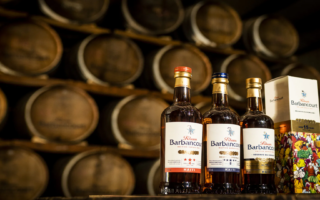Classic Cuisine: Steak Tartare
Steak tartare divides opinion but the dish needn’t be hard to swallow if made with the freshest ingredients
At a Paris bistro called Jos�phine ‘Chez Dumonet’, the waiter seasons the steak tartare before your eyes, deftly tossing minced raw beef with runny egg yolk, capers, gherkins, finely chopped shallots, Tabasco and Worcestershire sauce before heaping it on to the plate. Barbaric as it might seem to the uninitiated, this is one of the most addictive dishes in the French repertoire; taste a well-made version with an open mind and I can almost guarantee you will never turn back.
If we overlook the era before the discovery of fire, steak tartare can be traced back to the nomadic Huns, who were said to have placed raw meat under their horses’ saddles as they rode, to extract the blood and tenderise its fibres. The Tartars of Eurasia apparently did the same, possibly giving their name to the dish that would become popular in France thanks to Jules Verne. The author described a version of it in his Russian-themed novel Michel Strogoff, which led to steak tartare being served in Paris restaurants in the late 19th century. Early recipes often called for horsemeat, which gradually gave way to the less controversial beef.
Inevitably served with frites or saut�ed potatoes, steak tartare remains a staple on brasserie and bistro menus. If the ingredients of the classic recipe are not in question, the presentation can vary wildly, ranging from pre-seasoned and neatly shaped meat to a do-it-yourself version in which the diner takes an active role. �milie Antoine-Gr�goire, chef of the bistro Caf� March� in Nice, says she learned from her grandfather to present the meat surrounded by small piles of diced vegetables and condiments, which she varies according to the seasons; one day she serves a lemon vinaigrette, another a yoghurt sauce.
“If it comes already mixed you don’t know how fresh it is,” she says, and in this dish nothing counts more than freshness. For this reason I like to eat steak tartare in small bistros that rely on repeat customers, rather than caf�s or brasseries where the hygiene might be less rigorous.
As sushi and carpaccio have taken off in Paris, creating something of a raw craze, chefs have strayed from the original recipe to inject their own personalities into steak tartare. At Alain Ducasse’s cooking school in Paris, I learned to make a fairly classic version brightened with sun-dried tomato paste, mustard and flat-leaf parsley. Restaurant Cru in the Marais district, which serves mainly raw dishes, offers an Italian-inspired beef tartare with rocket salad and a lamb version with vadouvan curry spices. Widely considered to serve one of the best steak tartares in Paris, the wine bar Les Fines Gueules adds pesto and Parmesan, and serves it with a salad dressed with truffle oil.
But seasonings alone don’t make this dish: just as important are the quality of the meat and the method of cutting it. Some restaurants go as far as to name their supplier: if you see ‘Hugo’ on a menu, you will know that the meat comes from Hugo Desnoyer, the most celebrated butcher in Paris. Other words to look for are coup� � la main, which means that the beef has been painstakingly diced by hand. Though this is desirable, it’s worthwhile only when the meat is very tender and the dice very small, otherwise it can be unpleasantly chewy.
If you still cannot stomach the idea of raw minced beef, you might like to start with tartare aller-retour, popularised by the fashionable Costes brasseries such as Caf� Marly. In this dish, the meat is seasoned as for steak tartare before being seared on both sides. Attila the Hun might not have approved, but you can congratulate yourself for having taken the first step towards becoming a tartare connoisseur.
By Rosa Jackson
Beno�t Gauthier’s veal tartare with mesclun
Beno�t Gauthier gained haute cuisine credentials at Le Grand V�four in Paris before discovering his true calling alongside Christian Etchebest at the bistro Le Troquet. Together they opened Le Grand Pan in the residential 15th arrondissement, which Gauthier now runs on his own. Meat is the star here, whether cooked � la plancha (seared on a metal plate) or simply raw as in this adaptation of steak tartare using veal. Gauthier’s veal comes from Maul�on-Licharre in the French Basque country; use the best-quality veal you can find, ensuring that it is very fresh.
• 250g veal tenderloin
• 1 shallot
• 50g cured chorizo
• 20g capers
• 1tbsp soy sauce
• 2tbsp olive oil
• Pinch of fleur de sel
• Pinch of Espelette pepper (or another medium-hot chilli powder)
• 100g mesclun (mixed salad leaves)
• Olive oil
• Chopped chives
1. Using a sharp knife, cut the veal fillet into very small dice. Cut the shallot in half and dice it finely. Cut the chorizo into small dice. Place these ingredients in a bowl and add the capers, soy sauce, olive oil and seasonings. Adjust the seasoning to your taste.
2. Divide the tartare between four plates, using a metal ring mould (if you have one) to shape it, and surround it with the mesclun. Drizzle the leaves with olive oil, sprinkle some chives over the top and serve.
Share to: Facebook Twitter LinkedIn Email


